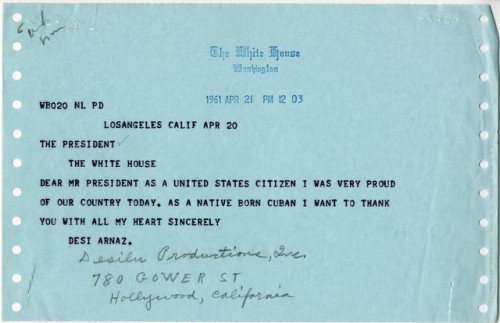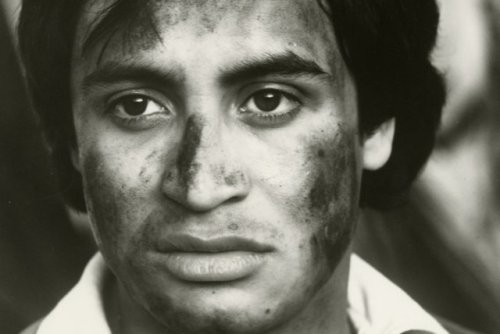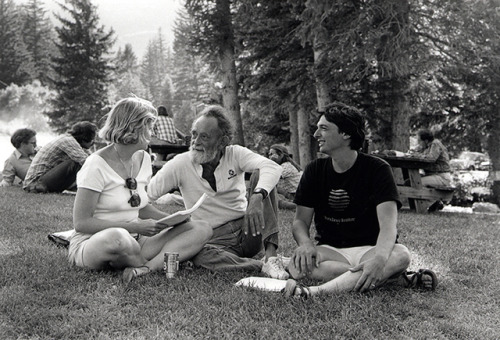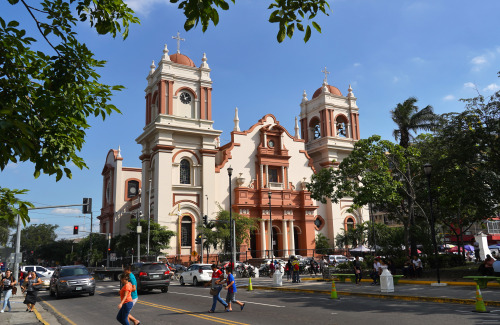#hispanic heritage month
Happy National Hispanic Heritage Month!
On this day in 1821, Nicaragua, Honduras, Costa Rica, El Salvador & Guatemala gained independence from Spain. Happy Independence Day!
What’s the difference between Hispanic, Latino and Latinx?
Hispanic, Latino/a and Latinx are words that represent huge, diverse populations of people — and that’s a big task! UC Berkeley researcher Cristina Mora explains the origins of these terms and how it’s connected to a much larger conversation about culture and representation.
Latinx? Latino/a? Hispanic?




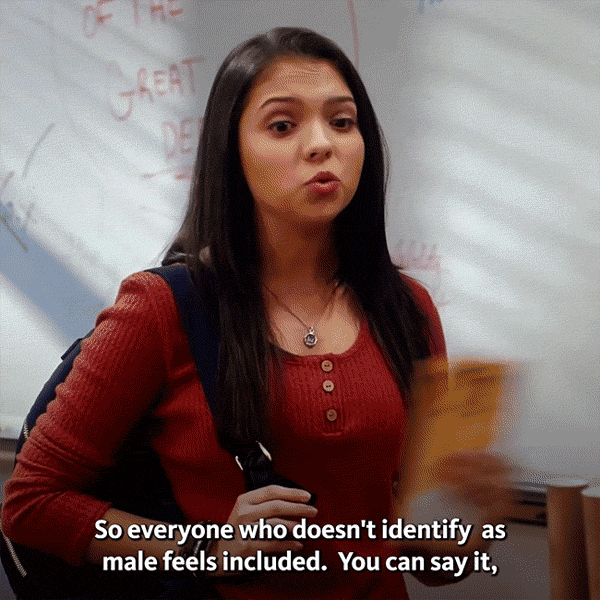




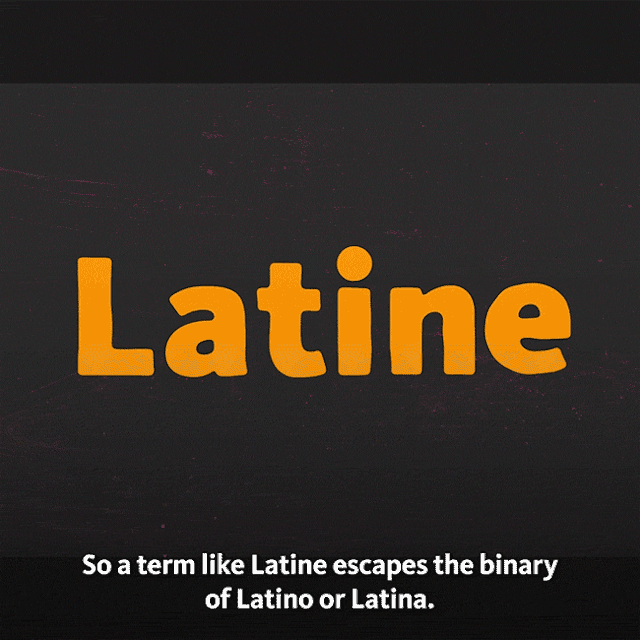
What’s the difference between Hispanic, Latino, Latinx and Latine?
People often want to know which term — Hispanic, Latino or Latinx — is the most respectful. But it really depends on the person and context.
“Hispanic” refers to any of the peoples in the Americas and Spain who speak Spanish or are descended from Spanish-speaking communities. It was coined in the 1970s by the U.S. Census Bureau to offer a pan-ethnic name for peoples such as Puerto Ricans, Mexican Americans, Cuban Americans and others, whose social, economic and political needs were often ignored.
According to UC Berkeley’s Cristina Mora, before the term “Hispanic” was adopted, the census enumerators would often check off people such as Mexican Americans as “White” on the census forms.
In contrast to Hispanic, the term Latino describes any person with ancestry in Latin America, a politically defined region usually unified by the predominance of Romance languages. This definition usually includes Portuguese-speaking Brazil and French-speaking Haiti, but excludes Spain.
But what about Latinx??
For some, the pronunciation of the word is cryptic: la-TEENGKS? LA-tin-EX? For others, it represents a kind of language imperialism by imposing a new English word onto a Spanish word and rendering it unpronounceable.
Latinx is essentially a non-binary form of Latino or Latina. The suffix “-x” replaces the “-o” or “-a” corresponding to masculine or feminine, allowing the word to resist the gender binary. (In Spanish-speaking countries, the term Latine with the suffix “-e” is circulating as an alternative to the -o/a binary.)
White House Central Subject Files, Box 47, Cuba: Executive
Cuban-born actor & musician Desi Arnaz sent this telegram to the White House after JFK’s speech about the failed Bay of Pigs invasion. In his speech, JFK stated that the Cuban people would “continue to speak up for a free and independent Cuba,” and that “together we must build a Hemisphere where freedom can flourish.”
Post link
It seems so surreal at the moment but we finally did it!!! We reached $13,000!!! Seriously. Thank you all for your help!! Y'all been incredible, hyping it up & giving us Latinxs a chance to have this book made!
A special shout out to supporters and those helping spread the word. Without you and our wonderful contributors, this project would be nothing!
THANK YOU SO MUCH!!!!

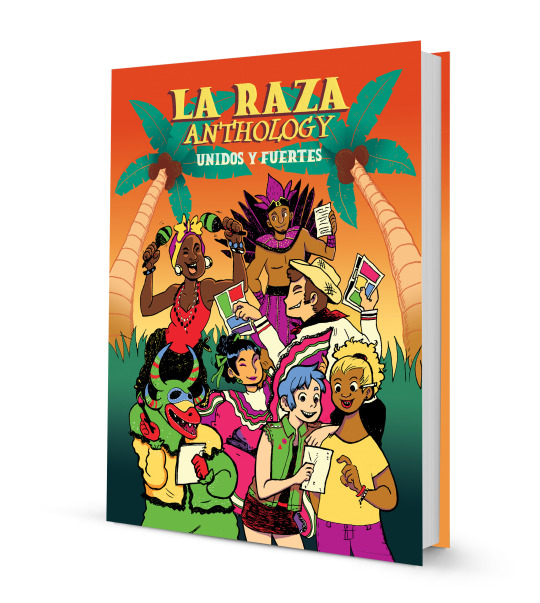
La Raza Anthology: Unidos y Fuertes - An unique anthology filled with comics, illustrations, poems and short stories celebrating & analyzing Latin American heritage. - http://kck.st/2bV7S3P
LESS THAN 46 HOURS TO GO TO FULLY FUND OUR BOOK?!? Please help spread the word! We need a project like this to represent marginalized creators! Every contribution counts :)
Thanks!
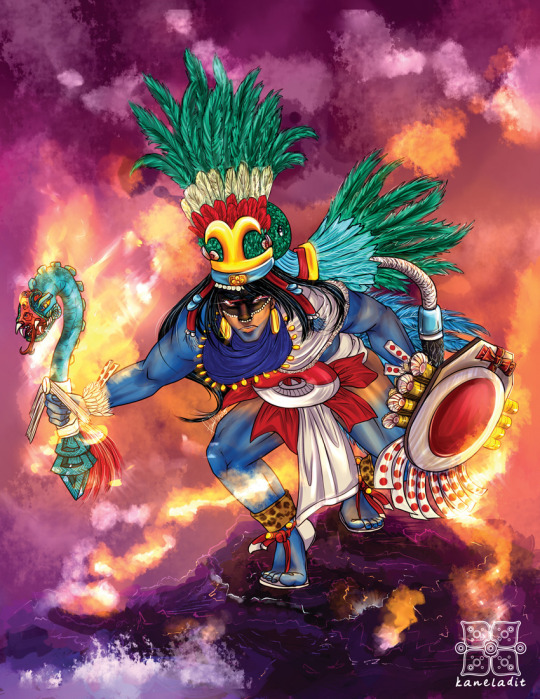

“My name is Carrroleena, not Carolina. The rolling of the “r” adds a prevalent Spanish accent, unlike the pronunciation of “North Carolina”.
It seemed odd for me to explain how my name is pronounced, considering I am one of at least twenty-five Carrroleena’s in my high school. But “How do you say your name?” became a commonly asked question when I stepped out of the Miami bubble by attending summer programs and traveling to far-off destinations.
The question usually presents itself on a sticky summer day, when my lips are dry and the beating sun tints my skin a shade darker. I puff up my chest and with a smile on my face, I respond, “It’s Carrroleena. You just gotta roll the r,”
Each syllable in my name carries the weight of my Cuban heritage. I was born from the children of Cuban exiles, who fled Castro’s communist regime to give their children and future generations a better life and a foundation in the land of opportunity.
Not one ounce of my explanation is in vain. I keep alive the story of how my abuelos came to the U.S. with solely the clothes on their backs and the pesos in their pockets. The story of how my abuelo’s company was ripped from his hands by Castro, leaving him with no choice other than to pump gas for forty-nine cents an hour. Their sacrifice and strife is in each stressed vowel, in each consonant of my name…”

A sample of her piece shown above, we’re honored to have Carolina’s work presented in La Raza Anthology. She’s one of our many promising young Latinxs with powerful messages in their works. We hope her work can inspire you as much as it did for us <3
“Carolina Dalia Gonzalez is a Cuban-American girl who hails from Miami, Florida. She began her own non-profit organization, Deferred Action for Dreamers, in 2012 with the mission to help the undocumented youth of her community. Deferred Action for Dreamers has helped over 2,000 undocumented immigrants since its inception and continues to carry out this mission. Carolina will be a freshman at Barnard College in New York City this coming fall and is very interested in the prospect of becoming the first latina president.”

>>> PLEDGE HERE TO GET OUR BOOK FUNDED<<<
LAST DAY TO PLEDGE IS SEPTEMBER 26th! EVERY CONTRIBUTION COUNTS SO PLEASE PASS IT ON! THANKS! <3
Here’s a preview of art by some of our talented Latinas featured in our anthology!!



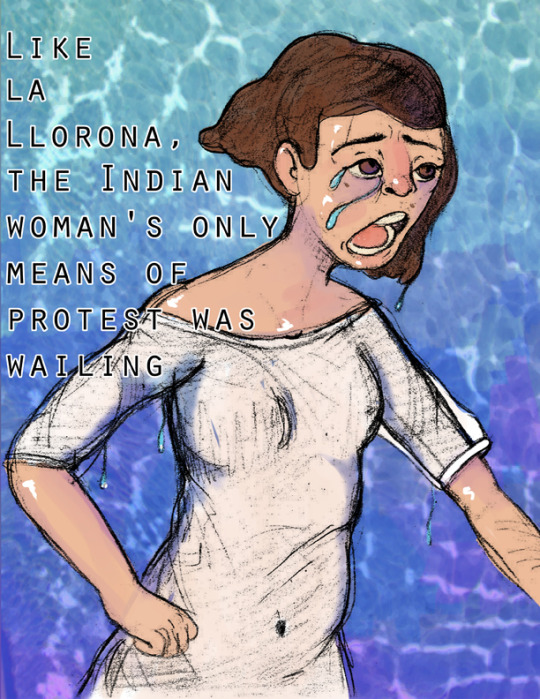
Brianna Valdez
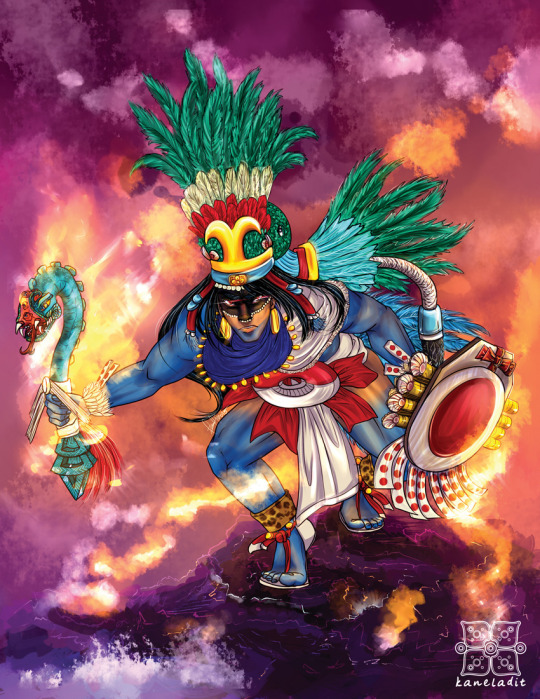
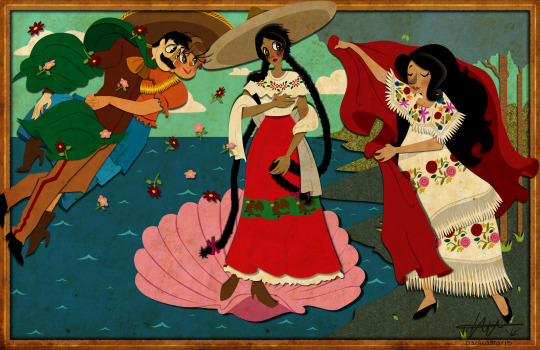
In addition to many more wonderful Latina contributors! You should definitely check out & follow our amazing contributors >>here<<
>>> PLEDGE HERE TO GET OUR BOOK FUNDED<<<
LAST DAY TO PLEDGE IS SEPTEMBER 26th! EVERY CONTRIBUTION COUNTS SO PLEASE PASS IT ON! THANKS! <3
Let’s celebrate by helping support our fellow Mexican contributors! We even have two awesome reward tiers featuring original works by William Keops Ilbañez andDaisy Ruiz!

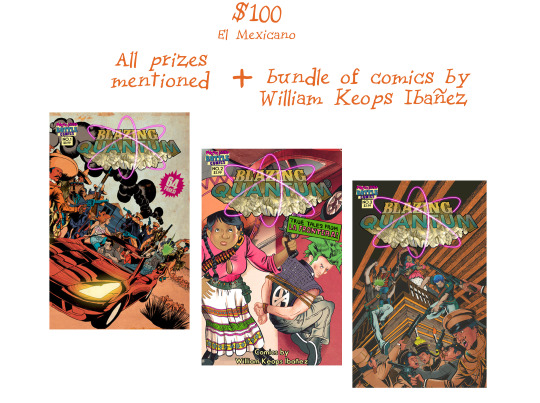

Born in 1996 in Chile, A.C is currently studying 3d Animation. The artist is heavily inspired by SouthAmerican culture and young artists from all over the world and portrays their perception and personality through different characters. Interested in every art form, wants the art and animation industry to grow in South America as an important contribution to the different countries.

Where is your family from?
My family is composed by two nationalities. My mother is Russian and my father is Chilean. They met because my father was exiled from Chile during the dictatorship. My mother was (and is) really interested in South American culture, our language, history, etc. My father was giving a talk at her university about Chile’s political status at the moment. They then started talking more and more about those kind of topics and after many many difficult situations they ended up marrying and moving back to Chile where I grew up and study right now.
What are some of your influences/inspirations?
At the moment my influences are the beautiful sketches by Daniela Strijleva and Chris Chua. South American artists that I like are Illustrators like Catabu, Hugustrador, Liniers and painters like Maliki and Decur, which I take reference from, among many others. What I look in their art is their message, the storytelling, that every piece of art that these people create has a strong meaning and such passion. I learn from them every day, and I keep looking for more growing artists that give such feelings.
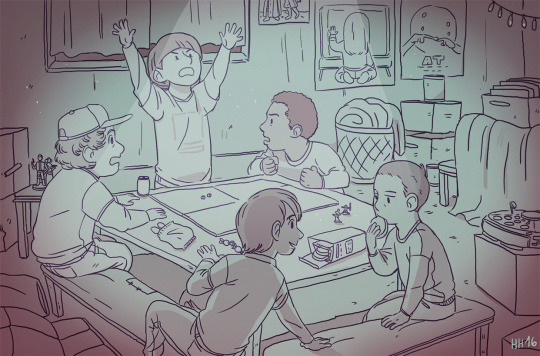

Can you tell us about your piece for La Raza?
My piece for LA RAZA is called “Mito y Tradición” its a mixed media illustration that uses the description showed by the internet of those two characters when in reality they are bigger and more than that.

What inspired you to draw these legendary figures?
When I choose to draw “El diablo” from “La diablada” celebrated on the north of Chile and of course countries like Perú and Bolivia I wanted to portrait a character that is very well known around here but maybe unknown most of the people who know very little about South America. “La diablada” is a really colorful and fun celebration that unites families and preserves traditions in a very powerful way, using loud music and delicious food. On the other hand, there is “La Pincoya” a local and very popular myth of the south of Chile, a beautiful woman that helps lost fishermen return to land.
With this design in particular I wanted to fight the usual representation that artists give her. She is usually seen as a stereotypically “perfect” woman, showing that most of the times people wont go for a different character design, a more interesting and unique than the usual that already exists, specially on women. And again, with the design I present I’d like to welcome those artists or anyone who starts to design something from a story to go further than the popular representation and to love our characters more to give them a unique life.
Do you have any projects coming up?
Right now i’m working as a visual developer on a animated shortfilm called “El Último” set in a futuristic Chile. Some personal projects that i’m working on the scripts of two webcomics called “Confetti” and “Amigo” that I hope to start sharing at the end of this year or at the beggining of the next one.

Be on the lookout for “Mito y Tradición” in our book La Raza Anthology: Unidos y Fuertes. Check out Ale’s blog for more of their awesome work!
In 1961, Rita Moreno became the first Hispanic actress to win an Academy Award for her role as Anita in “West Side Story.” She is also known for starring in “Singing in the Rain” and “The King and I” on stage, as well as being one of only 12 EGOT winners, with two Emmys, a Grammy, an Oscar, and a Tony.
In 2004, Moreno received the Presidential Medal of Freedom from President George W. Bush, and in 2009, she received the National Medal of the Arts from President Barack Obama.
In celebration of Hispanic Heritage Month, learn more about Rita Moreno’s achievements and contributions to the entertainment industry.
Post link
Please go to Kickstarter and support La Raza Anthology: Unidos y Fuertes, which is composed of many works by over 40 Latinx artists.
https://www.kickstarter.com/projects/katfajardo/la-raza-anthology-unidos-y-fuerte/description
Post link

Happy Latinx Heritage Month!
Let’s celebrate the fact that after years and years, Animal Crossing has finally included us!!! We can finally look like ourselves, especially us Afro-latinx ❤
During this Latine/x Heritage Month, we want to celebrate the diversity, beauty, and resilience of our Latine/x trans siblings
We see you in your boldness in these intersecting identities.
What does Latine/x Heritage Month mean to you?
Gregory Nava’s El Norte will be rereleased theatrically for the first time since its original run 35 years ago. Thanks to a brand new restoration conducted by the Academy Film Archive and the Getty Foundation, audiences can see it in theaters on September 15—the first day of Hispanic and Latinx Heritage Month, which coincides with the independence days of Honduras, Nicaragua, Guatemala, El Salvador, Costa Rica and Mexico.
Directed by Nava from a screenplay co-written by Anna Thomas, El Norte tells the story of two indigenous siblings who flee from persecution in their native Guatemala to follow the promise of a better life in the United States. Together Nava and Thomas attended the inaugural 1981 Directors Lab as part of a cohort of filmmakers invited by Robert Redford to develop their screenplays with the newly founded Sundance Institute. At the heart of El Norte is what Redford calls “the pursuit of a sense of place”—a struggle that resonates as deeply today as it did 35 years ago.
To learn more about El Norte, check out this interview with Gregory Navaandthis essay by Héctor Tobar.
Photos: 1. Film still courtesy of El Norte ; 2. Creative Advisor Waldo Salt and El Norte filmmakers Anna Thomas and Gregory Nava. © 1981 Sharon M. Beard
Post link



Hispanic Heritage Month begins on September 15 because this day marks the anniversary of independence for five Hispanic countries—Costa Rica, El Salvador, Guatemala, Honduras, and Nicaragua. In addition, Mexico achieved independence on September 16, and Chile on September 18.
The Dance of the 41 Maricones
On Sunday, November 17, 1901, police raided a private party and arrested forty-one men, nineteen of them were dressed as women. Those in drag were publicly humiliated by being forced to sweep the streets — “women’s work.” The 41 were taken to an army barracks and inducted into the Mexican army. At least some of them were then put on a train to Veracruz, sent by ship to the Yucatan, and made to serve in the army as it was putting down a Mayan insurgency.
Here is how El Popular reported the story on November 20:
Last Sunday night, the police of the Eighth Precinct were informed that in the house located at number 4 La Paaz Street, a ball was being held without the corresponding permit. They immediately moved in to surprise the culprits, and after having encountered numerous difficulties in trying to get the partygoers to open up, the police broke into the house’s patio where they found 42 individuals who were dancing to the excessively loud music of a local street band.
When they noted the presence of the police, some of those who were dressed in women’s clothing attempted to flee in order to change out of the clothes of the opposite sex; but as the police understood the gravity of the situation, they did not allow anyone to leave, and all 42 including those still dressed as women were taken to the station from which they were then sent to Belem Prison, charged with attacks on morality, and put at the disposition of the District Governor.
As a complement to the previous report, we will say that among those individuals dressed as women, several were recognized as dandies who are seen daily on Plateros Street.
These men wore elegant ladies’ gowns, wigs, false breasts, earrings, embroidered shoes, and a great deal of eye makeup and rouge on their faces.
Once the news hit the boulevards, all kinds of commentaries were made, and the conduct of those individuals was censured.
We will not provide our readers with further details because they are summarily disgusting.
It was said that many of those arrested came from highly respected families with ties to the government of dictator Porfirio Diaz. Some of the earliest newspaper reports, like this one, had it that 42 were arrested. That number later dropped to 41, which generated even more rumors. One had it that the elderly lady who owned the house was one of those arrested, and she was later released. Other, more sinister rumors had it that one of those arrested was one of Diaz’s nephews.
El Popular may have been reluctant to provide details, but in subsequent days it was happy to imagine the scene for its readers:
If only we had seen them in their resplendent hairdos, their fake cleavage, with their shiny sparkling earrings, with their falsies like the ones worn by anemic bimbos, with their corseted waists, their dancing-girl skirts like inverted tulips, their buttery tights, their shoes fringed with crimped gold thread and colored glass beads, and all of them bedaubed in white powder and rouge, prancing about in the fandango with their perfumed and curly mustaches.
On November 23, El Pas published this account of one group of prisoners being transferred to the train bound for Veracruz:
The men-only ball that was raided by the police continues provoking talk in all social circles, by virtue of the fact that many of those detained are perfectly well known, since among them are men who stroll day after day down the boulevards showing off their stylish and perfectly tailored suits and wearing sumptuous jewels.
As we stated in yesterday’s issue, 12 of those captured in the house on the fourth block of La Pazz were sent to Veracruz along with seven thieves who were also conscripted into the armed services.
At 5:30 in the morning, the hour at which attendance is taken in the 24th Battalion (that is being remitted to the port of Veracruz), those called on first were the 12 individuals who had been at the famed ball, and after number 13, who was apelado [a term for a rough, lower-class urban Mexican] was called, he replied on hearing his name, “Present, my Captain,but let me go on record as saying that I am being conscripted as a thief; but I’m not one of them,” and he pointed to the group of dancers.
This provoked the laughter of those present, because not even a thief was willing to be confused with the perfumed boys, as they are called by the soldiers from the barracks
A very amusing scene developed in the the barracks of the 24th Battalion when the repugnant ones arrived wearing their magnificent overcoats, along with hats and nice patent-leather shoes. The captain of the recruits made them all strip without delay, and then handed out the rough but honorable articles of clothing that are given to recruits.
With tears in their eyes, they stripped off all their clothes, some of them begging that they be allowed at least to keep their nice silk undergarments, a request that the captain denied, since, he told them, there they were just the same as everyone else. He didn’t even allow them to keep their socks, and they all began to cry as they put on the shoes that would replace their lovely patent leather ladies’ shoes.
The government paper, El Imparcial, took plains to deny that the army was foolish enough to send any girly-men to the front lines:
All of the prisoners have been sent to Yucatan, but not as it has been said to join the ranks of the valiant soldiers taking part in the campaign; they will be employed instead on such tasks as digging trenches, opening breaches, and raising temporary fortifications.
Today, the number 41 has become slang for homosexuality or, more specifically, “faggot” or maricon. As the former revolutionary general and National Defense Secretary Francisco L. Urquizo explained in 1965, “The influence of this tradition is so strong that even officialdom ignores the number 41. No division, regiment, or battalion of the army is given the number 41. From 40 they progress directly to 42. No payroll has a number 41. Municipal records show no houses with the number 41. No hotel or hospital has a room 41. Nobody celebrates their 41st birthday, going straight from 40 to 42. No vehicle is assigned a number plate with 41, and no police officer will accept a badge with that number.” Some of the early LGBT advocacy groups in Mexico incorporated the number into their names, just as many similar groups in the U.S. have leveraged “Stonewall” as a shorthand for the struggle for gay rights.
Post link
Catedral de San Pedro Apóstol, Cortés, Honduras
Construction of this Neo-Colonial beauty began in 1947. Designed by architect José Francisco Zalazar, its patron is St. Peter the Apostle. It is one of the main cathedrals in Honduras.
Taken by professional photographer Zug55.
Post link
Iglesia de San Francisco de Asís, Lima, Peru
Added to the UNESCO World Heritage List in 1991, this Roman Catholic basilica is at the heart of the Historic Centre of Lima. The church is also a monastery containing a library and catacombs.
Original image.
Post link
Welcome to the last post of the month. First of all, I’d like to thank all the amazing authors for taking time to be part of this series. I was afraid I wouldn’t be able to find enough authors to fill in the month. But we did more than that, and hopefully next year we will be back and better than ever. I hope you enjoyed discovering new voices.

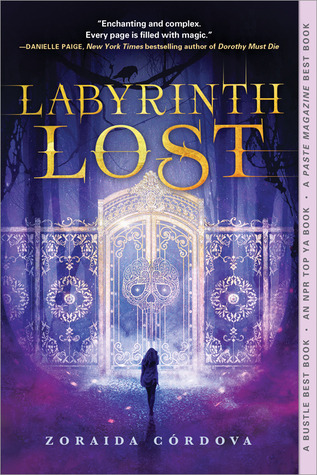
¡Qué bonita bandera! AKA what heritage(s) do you claim?
I was born in Guayaquil, Ecuador and I was raised in New York City. I am 100% Latina and 100% New Yorker.

When was the first time you saw yourself represented?
To be honest, I still haven’t. Not in the sense that I’ve seen an Ecuadorian girl starring in a novel or movie. When I was a teen and found out Christina Aguilera was half Ecuadorian, I wished she could represent part of me that desperately wanted to be seen–dark haired, dark eyes. But I shouldn’t judge.
When I write, I put a little bit of my Ecuadorian self but my whole New York self. It’s like I’m afraid that people won’t relate. But that’s not true, is it? I have to be brave enough to write that character and let the audience decide.
All of this to say that the closest representation to mine is the family dynamic in Jane the Virgin.
How do you connect to your heritage through your books (if at all)?
I’ve always included a Latinx character in my books. There’s Layla Santos in The VIcious Deep. Sky Lopez inLove on the Ledge. It hasn’t been until Labyrinth Lost and the Brooklyn Brujas series that I felt confident enough to write a completely Latinx cast.
What do you hope for the future of Latinx books?
I’ve like to see Latinx authors to be able to write whatever they want. I think for a long time we were expected to write tragic immigrant or assimilation stories. I want us to be heroes. I want us to be everywhere from happy contemporaries to magical realms to the outer most reaches of the galaxy.
What is the book that inspired you to write for kids/teens?
In the Forest of the Night by Amelia Atwater-Rhodes. I wanted to be front and center in a fantastical story.
What are you writing now?
I finished copyedits of book 2 in the Brooklyn Brujas series, which will feature the eldest Mortiz sister, Lula. I’m drafting Brooklyn Brujas 3. The first book in the series is in development with Paramount Studios. I recently sold a series to Disney-Hyperion called Hollow Crown which is slated for a Summer 2019 launch. I’m also working on a secret project that hasn’t been announced yet but is slated for 2019.

Zoraida Córdova is the award-winning author of urban fantasies The Vicious Deep trilogy and the Brooklyn Brujas series, as well as the adult romance series On the Verge. Her short fiction is featured in the anthologies Star Wars: From a Certain Point of View, and Toil & Trouble. Zoraida’s most recent release, Labyrinth Lost, was named a Best Book of 2016 by Paste Magazine and has been optioned by Paramount Pictures. She is also the author of the upcoming Hollow Crown, to be published by Disney Hyperion in 2019.
Website*Twitter*Instagram*Buy

¡Qué bonita bandera! AKA what heritage(s) do you claim?
I’m very Tejana. My dad’s family is Mexican/Italian, and my mom’s family is mostly Irish but lived in Guadalajara while she was in elementary school. Lots of culture mixing and subsequent confusion, but I ended up with Mexican pride from both sides of the family.
When was the first time you saw yourself represented?
My mom said I could only have one American Girl doll, but then changed her mind and let me get a second when they came out with Josefina Montoya.
Honorable mentions to Wizards of Waverly place, Leo Valdez from The Heroes of Olympus, and Mexican WhiteBoy by Matt de la Peña.
How do you connect to your heritage through your books (if at all)?
My debut novel deals with baking and food magic, and food is such a fundamental part of family and culture. Even though none of my extended family bakes much, sharing food (especially dessert) is a huge part of how we express our love. Creating a magic system also helped me think about which parts of my heritage felt powerful and how I wanted to celebrate them. I also got to “research” lots and lots of pan dulce!
What do you hope for the future of Latinx books?
What is the book that inspired you to write for kids/teens?
I wrote books before I could spell, but The School Story by Andrew Clements was the book that taught me that real people (not just old dead ones) could actually write and publish books.
What are you writing now?
My debut novel Love Sugar Magic: A Dash of Trouble, in conjunction with Cake Literary, will be out on January 2, 2018, and is up for pre-order now. I’m currently writing the sequel to that book and revising a YA project that involves a muggle quidditch team.

Anna Meriano grew up in Houston, Texas, with an older brother and a younger brother but (tragically) no sisters. She earned a BA in English from Rice University and an MFA in creative writing from The New School. She has taught creative writing and English, and works as a writing tutor. Anna likes reading, knitting, playing full-contact quidditch, and singing along to songs in English, Spanish, and ASL.
Website*Twitter*Pre-orderLove Sugar Magic!

¡Qué bonita bandera! AKA what heritage(s) do you claim?
My father is a Mexican immigrant and my mother was born in New York, of Dominican parents. A bit of both heritages have trickled down to my sisters and I.
When was the first time you saw yourself represented?
In the hit 80s TV show CHiPs. It was filmed in southern California, where I was living. It’s hard to overstate the impact of dark-skinned Erik Estrada, accidental star of the show, on a little Latino kid. Miraculously, he didn’t portray a manual laborer or the bad guy. He played a charming cop who chased down criminals and hooked up with beautiful women.
How do you connect to your heritage through your books (if at all)?
In my first book, the main character has grown up in Florida without much family around. He’s a Latino kid who is sometimes rejected by his own for not speaking Spanish well. He doesn’t have a very strong connection to his heritage, which was my own experience growing up.
The book I’m currently writing features some culture from Mexico, where I’ve lived as an adult for many years. The main character has dual identities, Mexican and American. At times these identities overlap and at other times they clash. That sort of reflects my life now.
What do you hope for the future of Latinx books?
Diversity! Latinx people have different socioeconomic statuses, different struggles, and passions. Unfortunately, some people in publishing expect our characters to reinforce their conceptions of what it means to be Latinx. Authors are still told their characters aren’t Latinx enough.
What is the book that inspired you to write for kids/teens?
It might have been The Outsiders, which I’ve read five times. It a great story about the challenges of growing up poor and marginalized in an Oklahoma town. I’m always moved by the narrator’s authentic voice, how he observes the world and feels things deeply, as teenagers do.
What are you writing now?
A second novel. An uncool teenager with low self-esteem attempts to erase and recreate himself. It’s about the dangers of reacting to certain societal pressures, and the mistakes we sometimes make in the name of self-improvement.

Fred Aceves was born in New York but spent most of his youth in Southern California and Tampa, Florida, where he lived in a poor, working class neighborhood like the one described in The Closest I’ve Come. At the age of 21 he started traveling around the world, living in Chicago, New York, the Czech Republic, France, Argentina, Bolivia, and Mexico, his father’s native land. Among other jobs, he has worked as a delivery driver, server, cook, car salesman, freelance editor, and teacher of English as a second language. The Closest I’ve Come is his first novel.
Website*Twitter*Pre-orderThe Closest I’ve Come

¡Qué bonita bandera! AKA what heritage(s) do you claim?
My mom is Mexican American, and my dad is half Puerto Rican and half white.
When was the first time you saw yourself represented?
With exactly those ingredients? Never. Before I was really into books and set my sights on being a writer, I was into music. When I was a teen, my goal in life was to join a rock band and tour the world. I played the bass. One of my idols was Cristina Martinez from the band Boss Hog. I don’t even know what her heritage is, but I saw her name and her long, dark hair and was in goo-goo eyes in love.
How do you connect to your heritage through your books (if at all)?
Most of the main characters in my books have some kind of mixed heritage. In A Fierce and Subtle Poison, Lucas is white and Dominican, and Isabel is white and Puerto Rican. In All the Wind in the World, Sarah Jacqueline is referred to as “mixed blood,” and you get the sense that a lot of people in her world are as well. I’m always interested in the ways in which multi-racial people can both claim their identity, but also be claimed by it. There are certain ways in which a person can exert power by controlling who they are and what they do, but also there are ways in which people’s bloodlines are inescapable. They call to you–tug at you–from the past. Well, I shouldn’t speak for everyone. This is just how it feels for me. I like to write characters that are both propelling themselves forward while being snagged on something from the past.
What do you hope for the future of Latinx books?
I hope that a wider variety of the Latinx experience can be explored. I once had a student tell me that she wanted to become more involved with issues that affected her community, but that she sometimes felt excluded or shamed, sort of like she wasn’t Latina enough because she wasn’t totally fluent in Spanish. To me, this is really frustrating, because there’s no one way to be Latinx. There never has been! We can continue to write past stereotypes and present varied experiences, and hopefully, that can make a difference.
What is the book that inspired you to write for kids/teens?
Imaginary Girls by Nova Ren Suma.
What are you writing now?
I’m working on a ghost story set in San Antonio. And also a story about bandits. They’re both coming along slowly but surely.

Samantha Mabry grew up in Texas playing bass guitar along to vinyl records, writing fan letters to rock stars, and reading big, big books, and credits her tendency toward magical thinking to her Grandmother Garcia, who would wash money in the kitchen sink to rinse off any bad spirits. She teaches writing and Latino literature at a community college in Dallas, Texas, where she lives with her husband, a historian, and her pets, including a cat named Mouse. She is the author of the novels A Fierce and Subtle Poison andAll the Wind in the World(on sale today October 10 from Algonquin Young Readers!). Visit her online at samanthamabry.com or on Twitter: @samanthamabry.
Website*Twitter*Instagram*Buy

¡Qué bonita bandera! AKA what heritage(s) do you claim?
I am an unapologetically Black-identified DominiRican, My mother is from La Romana in the Dominican Republic, and my father is from Mayaüez, Puerto Rico. I was born and raised in the Bronx, and I would argue that being a caribeña from New York City is a distinct identity.
When was the first time you saw yourself represented?
It absolutely was Sonia Manzano who played Maria on Sesame Street and soon thereafter Freddie Prinze on Chico and the Man. I was an adult when I first saw myself as a Latina in a book, and unfortunately, it was in Oscar Lewis’ La Vida. As a young adult, the closest I came to seeing myself were in the African American characters in books by Walter Dean Myers and Rosa Guy.
How do you connect to your heritage through your books (if at all)?
I’ve written six novels and twice as many short stories and novellas, and in every single one you will find a Puerto Rican or Dominican woman or girl even if they’re not the protagonist. I write the characters whose relationship to their Latindad departs from what you might read in the average intro to Latino literature course. The one whose first – and maybe only language – is English, doesn’t dance salsa and didn’t have a special relationship with her abuelita, and for whom all that is a point of pain. The one who isn’t preoccupied with “straddling two cultures” because she intuitively understands that she’s at once much simpler and more complicated than that. The one who knows all of Cardi B’s songs and reads Sonia Sotomayor’s decisions.
In fact, in mostly all of my stories you’ll find specifically a Latinx hip-hop feminist whether she identifies explicitly as that or not.
What do you hope for the future of Latinx books?
My biggest hope is to see more of our work adapted for TV and film. Although we remain underrepresented, we still have a tremendous body of work that crosses genres and aesthetics. We have and continue to write everything from horror to satire, and yet people still have a very narrow idea of what makes Latinx literature. And as someone who writes frequently about Latinx people from urban communities who are low-income, I’d like to see the shaming of that fall away. Yes, we need to have more depictions of people who are doctors and lawyers and such, but we do not have to render invisible those who are not. The answer is to complicate them not erase them.
What is the book that inspired you to write for kids/teens?
That’s a tough one to answer because it was reading YA as a teen myself that inspired me to write. I was a teen writing for teens, and not only was I reading voraciously, that was, like, over thirty years ago. The authors I remember striking a chord with me when I was in seventh, eighth grade were Judy Blume, Marilyn Sachs, Ellen Conford, S.E. Hinton, Sonia Pilcer, Paul Zindel and Walter Dean Myers. And Charles Dickens. (En serio.) I didn’t have the diversity of writers and characters that are available to young people now so imagine the amazing stories we’re in for when these young writers of color come of age.
What are you writing now?
I’m currently working on a middle-grade series, developing a TV show based on one of my novels for adults and a few screenplays. I’m also re-publishing my Black Artemis backlist - that’s the pen name under which I wrote three novels of feminist hip-hop noir. Just for the hell of it, I’m writing a multimedia novel on my blog that I update when I need a break from the other projects. My latest available YA novel is Show and Prove which is set in the summer of 1983 in the South Bronx and has a nifty cultural dictionary to go along with it.

After graduating from Columbia University with a BA in history-sociology and an MPA from its School of International and Public Affairs, Sofia Quintero began her first career as a policy analyst and advocate. She worked for various nonprofit organizations and government agencies including the Vera Institute of Justice, Hispanic AIDS Forum, and the New York City Independent Budget Office. After years of working on diverse policy issues, however, Sofia heeded her muse to pursue an entertainment career.
Determined to write edgy yet intelligent novels for women who love hip hop even when hip-hop fails to love them in return, Sofía wrote her debut novel EXPLICIT CONTENT under the pen name Black Artemis. Booklist said of her debut, “Fans of Sister Souljah’s The Coldest Winter Ever will find this debut novel just as tantalizing…” Since then Sofia has authored four more novels and almost twice as many short stories and novellas including her award-winning young adult debut EFRAIN’S SECRET (Knopf 2010.)
She recently earned an MFA in writing and producing TV at the TV Writers Studio of Long Island University and contributed the children’s anthology WHAT YOU WISH FOR, the proceeds of which go to build libraries for Darfuri children in Chad. Her journalistic writings have been published in Urban Latino, New York Post, Ms., Cosmopolitan for Latinas and El Diario/La Prensa.
As an educator, she is a writing mentor at Urban Word NYC, a teaching artist at the National Book Foundation’s reading program BookUpNYC and the co-publisher of the hip-hop feminist curriculum Conscious Women Rock the Page. Sofia was nominated for the Women’s Media Center Social Media Award in 2010 and is completing her next young adult novel SHOW AND PROVE.
Website*Twitter*Instagram*Wattpad*Facebook*Buy

¡Qué bonita bandera! AKA what heritage(s) do you claim?
Cubanooooo (and Jewish American on the other side)
When was the first time you saw yourself represented?
Sonia Manzano aka Maria from Sesame Street was the first and most important. And then not again until I was like in my twenties basically…there were some here and there of course but The Brief and Wondrous Life of Oscar Waowas a landmark for Latinx nerds like me.
How do you connect to your heritage through your books (if at all)?
I write a lot about the sustaining power of ancestors—a reclamation of the ghost story, which white western culture has turned into such singularly horrible narrative, whereas so many of grew up with a much more loving and nuanced relationship to our dead. Also, I write Latinx characters in all my books. Why? Because we exist and we are amazing.
What do you hope for the future of Latinx books?
That it expresses the endlessly complex humanity that we are composed of, in all our glory, joyfulness, sorrow, messiness.
What is the book that inspired you to write for kids/teens?
The Harry Potter series inspired me, but also made me want to write a kind of counternarrative because as much as I loved it, so many of the same old white savior tropes are still present. All of Octavia Butler’s books, Oscar Wao, Nalo Hopkinson, Nnedi Okorafor…
What are your working on next?
An upcoming Middle-Grade sci-fi adventure, Flood City, about two boys named Max and Ato who team up to stop the destruction of the last urban outpost on a flooded Earth. Out from Scholastic in 2018.

Daniel José Older is the New York Times bestselling author of the Young Adult series the Shadowshaper Cypher (Scholastic), the Bone Street Rumba urban fantasy series (Penguin), and the upcoming Middle Grade sci-fi adventure Flood City (Scholastic). He won the International Latino Book Award and has been nominated for the Kirkus Prize, the Mythopoeic Award, the Locus Award, the Andre Norton Award, and yes, the World Fantasy Award. Shadowshaper was named one of Esquire’s 80 Books Every Person Should Read. You can find his thoughts on writing, read dispatches from his decade-long career as an NYC paramedic and hear his music at http://danieljoseolder.net/, on youtube and @djolder on twitter.
Website*Twitter*Instagram*BuyShadowhouse Fall!

¡Qué bonita bandera! AKA what heritage(s) do you claim?
I’m Afrolatina. My mother is Puerto Rican and black. My dad is white.
When was the first time you saw yourself represented?
Carmen in Sisterhood of the Traveling Pants! I definitely cried when I read that she was Puerto Rican with a white dad.

How do you connect to your heritage through your books (if at all)?
I don’t consciously think about connecting to my heritage through my books, but people bring their culture to everything they do–in their vocab, worldview, how they think about family. So, no matter what character I’m writing, their heritage is a factor in all of their decisions. If I’m writing a character with my background, then I think about how my aunts and uncles and primas would react to a situation. But being mixed race, I often have to stop and ask friends if something is universal or just a quirk of my own family’s blended culture.
What do you hope for the future of Latinx books?
I just want more. I want more Latinx leads and love interests and best friends. Give me a Mexican girl in love with a Puerto Rican boy with friends who are Salvadoran and Colombian. I want YA novels that feel like the Pero Like channel where everyone is constantly learning about how their cultures intersect. And I want it written by Latinx authors. I wish the first time I saw myself hadn’t been in a book written by a white woman.
What is the book that inspired you to write for kids/teens?
I started writing because of fan fic. I wrote fic based on musicals and Harry Potter. Seeing Cassandra Clare move from fan fic to being a huge front list author made me realize that someday I could be traditionally published.
What are you writing now?
My next book, Not Now, Not Ever, comes out November 21 from Wednesday Books (formerly St. Martin’s Griffin)! A girl runs away from home using Oscar Wilde’s The Importance Of Being Earnest as a guide and competes for a college scholarship at a summer camp for geniuses. Hijinks ensue, duh.

LILY ANDERSON is a school librarian and Melvil Dewey fangirl with an ever-growing collection of musical theater tattoos and Harry Potter ephemera. She lives in Northern California, far from her mortal enemy: the snow.
Website*Twitter*Pre-orderNot Now, Not Ever!

¡Qué bonita bandera! AKA what heritage(s) do you claim?
Mexican-American. I am of mixed ethnicity (half Anglo-American), but identify as Mexican-American / Latino.
When was the first time you saw yourself represented?
My freshman year in college. The book was The House on Mango Streetby Sandra Cisneros. I had read Latin-American authors in high school, but never anything by a US Latinx author. I didn’t even know that we wrote books. That same yearI read the collection of Mexican-American folklore Flour from Another Sackand realized that the cuentos my abuela Garza had told me as a child were valid literature that my schooling had stripped from me. I felt robbed. I was pissed.
How do you connect to your heritage through your books (if at all)?
My books feature Mexican-American protagonists in fantasy or sci-fi settings that draw from Mexican and pre-Colombian Mesoamerican traditions. Many of the issues I grapple with thematically are of particular concern to my community.
What do you hope for the future of Latinx books?
I want to see a broader spectrum of Latinx experience reflected in the children’s, middle-grade and young-adult books published each year, with unique characters that exist outside of the stereotypes. Such a vision can only be accomplished when the percentage of books written by people of color that accurately reflect the diverse reality of our times is closer to the actual percentage of the US population we make up. Fifty percent of school-age children are POC. Only 6 percent of books written for them have authors who are POC. That’s a major injustice.
What is the book that inspired you to write for kids/teens?
When I was a middle-school English teacher, across the hall from me was future children’s author/illustrator Xavier Garza, teaching art to the same kids I was trying to get excited about reading. He shared with me a fantastic bilingual collection of Mexican-American folk tales and legends titled Stories That Must Not Die by Juan Sauvageau. Not well known outside of deep South Texas, this book fascinated our students and others throughout the region, and using it in class, I realized that I wanted to write books for Latinx kids that would tap into our shared tradiciones y cuentos. Later, reading Guadalupe García McCall’s Summer of the Mariposas(which I just translated into Spanish for Tu Books), I decided to follow my heart and use our roots to craft relevant MG/YA speculative fiction as well.
What are you writing now?
My most recent MG/YA book is A Kingdom beneath the Waves, the sequel to the Pura Belpré Author Honor The Smoking Mirror. In January, Cinco Puntos Press will publish Feathered Serpent, Dark Heart of Sky: Myths of Mexico, and in 2019, my graphic novel Clockwork Curandera (illustrated by Raúl González) will be out from Tu Books.

About David:
A product of a Mexican-American family, I have lived most of my life in deep South Texas, where I teach at the University of Texas Río Grande Valley. Recipient of awards from the American Library Association, Texas Institute of Letters and Texas Associated Press, I have written several books, most significantly the Pura Belpré Honor Book The Smoking Mirror.
Additionally, my work has been published in venues including Rattle, Strange Horizons, Apex Magazine, Metamorphoses, Translation Review, Concho River Review, Huizache, Journal of Children’s Literature, Asymptote, Eye to the Telescope and Newfound.
Website*Twitter*Facebook*Instagram*Pre-order!

¡Qué bonita bandera! AKA what heritage(s) do you claim?
I’m Mexican-American, but my loved ones growing up weren’t all Mexican, so I’ll often use the term Latina.
When was the first time you saw yourself represented?
Laura Esquivel’s Like Water for Chocolate.
How do you connect to your heritage through your books (if at all)?
The tradition of magical realism, the heritage of my main characters, the food they cook in their mothers’ kitchens, the bedtime stories they hear growing up.
What do you hope for the future of Latinx books?
That Latinx readers can find themselves in whatever kind of book they’re looking for, and that more books feature main characters with intersectional identities.
What is the book that inspired you to write for kids/teens?
The Chronicles of NarniaorThe Little Prince.
What are you writing now?
My bi Latina girls and enchanted murderous gardens novel, Wild Beauty,is out on October 3, and I’m currently working on Blanca & Roja,a Latinx retelling of Snow-White & Rose-Red meets Swan Lake, slated for 2018.

Anna-Marie McLemore(she/her) was born in the foothills of the San Gabriel Mountains and taught by her family to hear la llorona in the Santa Ana winds. She is the author of THE WEIGHT OF FEATHERS, a finalist for the 2016 William C. Morris Debut Award, and 2017 Stonewall Honor Book WHEN THE MOON WAS OURS, which was longlisted for the National Book Award in Young People’s Literature. Her latest is WILD BEAUTY, and BLANCA & ROJA is forthcoming in fall of 2018.
Website*Twitter*Facebook*BuyWild Beauty!

¡Qué bonita bandera! AKA what heritage(s) do you claim?
Puerto Rican
When was the first time you saw yourself represented?
I read fantasy and sci-fi almost exclusively as a kid so I probably spent more time with elves and dragons than fictional humans. In any media, the first time I remember being aware of and appreciating seeing someone who looked like me in a genre work in any format was Jessica Alba in the TV show Dark Angel.
How do you connect to your heritage through your books (if at all)?
The main character of The Girl at Midnight series is Puerto Rican. She’s also the only human in the books, so it’s not actually a huge part of the plot but I did make sure to include a scene in The Savage Dawn where she travels to Puerto Rico and encounters magical bird people living in El Yunque. It’s such an enchanting rainforest and that was a blast to write.
What do you hope for the future of Latinx books?
In the past couple of years, publishing has made huge strides in diversifying books for younger readers, but there’s still so much ground left to explore, particularly in genre titles. I want to see Latinx protagonists tackling cyberpunk dystopias and traveling through portals and fighting evil wizards.
What is the book that inspired you to write for kids/teens?
The Secret Circleby LJ Smith. When I was a kid, that was the sort of book I wanted to write.
What are you writing now?
Right now, I’m working on a sci-fi YA book I’m not allowed to talk about yet! I’ve wrapped up The Girl at Midnight series with The Savage Dawn but it’ll always have a special place in my heart.

Melissa Grey was born and raised in New York City. She wrote her first short story at the age of twelve and hasn’t stopped writing since. After earning a degree in fine arts at Yale University, she embarked on an adventure of global proportions and discovered a secret talent for navigating subway systems in just about any language. She works as a freelance writer in New York City. She is the author of the Girl at Midnight series: The Girl at Midnight, The Shadow Hour,andThe Savage Dawn. To learn more about Melissa, visit melissa-grey.com, follow @meligrey on Twitter, and look for melissagrey_ on Instagram.
Website*Twitter*Instagram*BuyThe Savage Dawn!

¡Qué bonita bandera! AKA what heritage(s) do you claim?
My dad was born in Argentina before immigrating to California as a teen, and I’m very proud of my Argentine heritage.
When was the first time you saw yourself represented?
The House on Mango Street by Sandra Cisneros was the only book featuring Latinx characters that I read in English class. Although the life experiences of those characters were very different from my own, just reading about people with Spanish names like mine was exciting and gratifying in a way my 12-year-old self didn’t quite understand. Also, as silly as it might sound, Cameron Diaz first became famous when I was in high school and I’d never seen a white Latina like me on the screen before; it made those conversations about “not looking like a Pérez” easier to take and allowed me to educate those willing to listen.
How do you connect to your heritage through your books (if at all)?
It’s taken me a while to work up the courage to write a Latinx MC mostly because I’ve been worried that my experience isn’t representative and therefore invalid somehow. Then I realized, ¡Qué idiota soy! My experience is my own and I can only tell my own stories, and I don’t need anyone else’s permission. The result is my current middle-grade WIP set in New York, where I grew up, and it’s the book of my heart. My debut YA is a high fantasy but one of the leads is of mixed heritage within his world. Subconsciously I have always included characters who have to negotiate two different cultures as surrogates for myself, I think.
What do you hope for the future of Latinx books?
¡Más y más! I hope that there are more and more books on shelves featuring Latinx characters who demonstrate the breadth and diversity of Latinx cultures as well as stories where Latinx protagonists have adventures or fly spaceships just like any other white character.
What is the book that inspired you to write for kids/teens?
I don’t think I can pick just one! The three books that inspired me as a young teen were The True Confessions of Charlotte Doyle by Avi, The Mists of Avalon by Marion Zimmer Bradley, and Alanna: The First Adventure by Tamora Pierce. The heroines of these novels are headstrong and independent, and I wanted to be just like them. They helped shape the way I saw the world as well as what I thought I might be able to achieve, and my greatest hope is that my heroines might inspire other teens in the same way.
What are you writing now?
Sweet Black Waves, the first book in my debut trilogy, will be released by Imprint/Macmillan on June 5th, 2018 and I’m brimming with excitement! Taking inspiration from the medieval tale of Tristan and Eseult, my retelling shines a light on the legend’s true heroine––the princess’s cousin, Branwen––and her ancient healing magic. Branwen is my ode to the heroines whom I Ioved so much as a teen and I can’t wait to share her with readers. I’m currently hard at work on the second book in the series!

Kristina Pérez is a half-Argentine/half-Norwegian native New Yorker. She has spent the past two decades working as a journalist and academic in Europe and Asia, and has a PhD in Medieval Literature from the University of Cambridge. Sweet Black Waves is Kristina’s debut YA novel, out June 5th, 2018 from Imprint/Macmillan. This lush fantasy of warring countries and family secrets is the first in a trilogy inspired by the star-crossed tale of Tristan and Eseult.
Website*Twitter*Instagram*Facebook *Pinterest *Goodreads*Pre-order Sweet Black Waves! *

What is #PubForPR?
From the website: #PubforPR is a group of authors, editors, and literary agents that have come together to create an auction to benefit Puerto Rico’s relief efforts after hurricane María. All proceeds will go directly to Unidos por Puerto RicoandConPRmetidos, two carefully vetted local charity organizations.
How can you bid?
There are hundreds of items up for auction. From book bundles for readers to manuscript critiques for aspiring authors, and even visits to NYC! Auction items are listed by groups, or you can just scroll until you find something that catches your eye.
Click->>> https://pubforpr.wordpress.com/list-of-auction-items/
We can do this, todos unidos!
(#OurVoces is not affiliated with #PubForPR. We are boosting and sharing as best as we can.)


¡Qué bonita bandera! AKA what heritage(s) do you claim?
Cuban-American.
When was the first time you saw yourself represented?
As a Cuban-American child, I never saw myself represented in any children’s books. As an adult, the first time I recognized the Cuban-American experience in a book for young readers was when I read Alma Flor Ada’s beautiful memoirs, Under the Royal Palms, and Where the Flame Trees Bloom.
How do you connect to your heritage through your books (if at all)?
Most of my books are about Cuba or Cuban-Americans. Sometimes I branch out to other topics that interest me as a scientist, but in general, my passion for writing is connected to my childhood visits to relatives in Cuba, and to return trips as an adult.
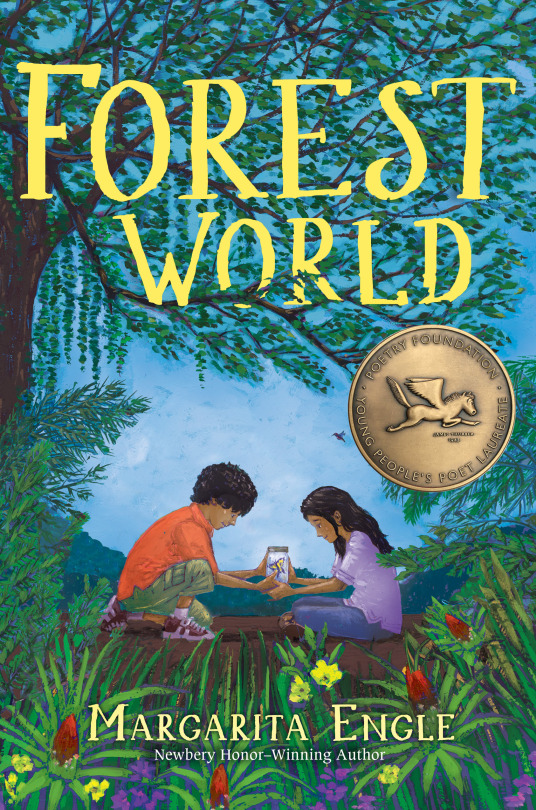
What do you hope for the future of Latinx books?
I hope that more #OwnVoices Latinx books will cross borders, helping young readers learn about the whole world, not just our own neighborhoods.
What is the book that inspired you to write for kids/teens?
Under the Royal Palms, by Alma Flor Ada and Carver, by Marilyn Nelson, inspired me to experiment with the verse novel form.
What are you writing now?
I’m working on biographical and scientific poetry picture books, and verse novels about some of the great Latin American poets of the early 20th century.

Margarita Engle is the 2017-2019 national Young People’s Poet Laureate, and the first Latino to receive that honor. She is the Cuban-American author of many verse novels, including The Surrender Tree, a Newbery Honor winner, and The Lightning Dreamer, a PEN USA Award recipient. Her verse memoir, Enchanted Air, received the Pura Belpré Award, Golden Kite Award, Walter Dean Myers Honor, Lee Bennett Hopkins Poetry Award, and Arnold Adoff Poetry Award, among others. Drum Dream Girl received the Charlotte Zolotow Award for best picture book text.
Her newest verse novel about the island isForest World, and her newest picture books are All the Way to Havana, and Miguel’s Brave Knight: Young Cervantes and His Dream of Don Quixote.
Books forthcoming in 2018 include The Flying Girl, and Jazz Owls, a Novel of the Zoot Suit Riots.
Margarita was born in Los Angeles but developed a deep attachment to her mother’s homeland during childhood summers with relatives. She was trained as an agronomist and botanist. She lives in central California with her husband.
Website*Twitter* Poetry Foundation*Buy
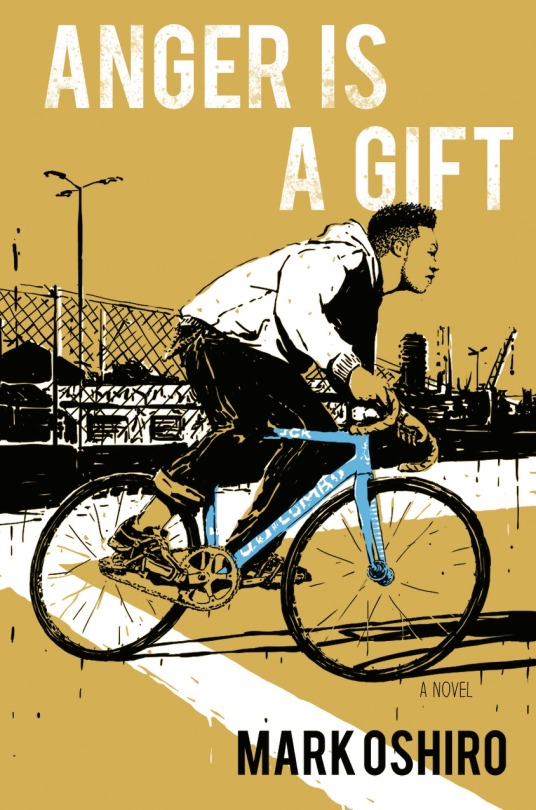
¡Qué bonita bandera! AKA what heritage(s) do you claim?
I identify as Latinx these days, but it’s actually a complicated answer. I grew up identifying as either Mexican, Chicano, or Latino. I’m a transracial adoptee, so all I knew about my biological parents was that my dad immigrated from Mexico and then left soon after I was born. I did one of those DNA tests in my late 20s and discovered that I was mostly Salvadoreño and Guatemalan, but I felt strange identifying with that heritage since it had not been part of my upbringing. Latinx feels right to me, both as a political statement and to describe who I am. I am brown and proud!
When was the first time you saw yourself represented?
The not-so-great answer: Speedy Gonzales. My twin brother and I loved him. The actually-great answer: The House on Mango Streetby Sandra Cisneros, which I read for my freshman year English class. I was 14 years old, and it changed my life forever.
How do you connect to your heritage through your books (if at all)?
I wrote a transracial Latinx adoptee into Anger is a Gift to explore the complicated issues of heritage, race, and identity. She’s not the protagonist, but plays a huge part in the life of my main character. My second novel (currently untitled) is a Latinx-inspired/influenced magical realism/horror story that takes place in a desert society and deals with migration. It is a much more intense exploration of my heritage, especially since I literally would not exist if my father had not immigrated from Mexico to California.
What do you hope for the future of Latinx books?
I want so many different types of stories! I want those of us in the Latinx community to explore all the issues we face; I want us to be able to celebrate our culture and share it with others, but with us at the helm. Ultimately, I want Latinx people telling Latinx stories.
What is the book that inspired you to write for kids/teens?
There are quite a few, but The House on Mango Streetis always going to be my first answer. That book showed me that stories could be about people like me, could be set in places that looked like where I lived and could be about things that affected my life. I am also massively inspired by Octavia Butler,Ursula K. LeGuin, and the Animorphs series (DON’T JUDGE, THOSE BOOKS ARE GREAT AND MESSED UP).
What are you writing now?
My YA debut, Anger Is a Gift, comes out May 22, 2018; I’m currently hard at work at a magical-realism-meets-horror standalone set in a desert. You can read an excerpt here:click!

MARK OSHIRO is the Hugo-nominated writer of the online Mark Does Stuff universe (Mark Reads and Mark Watches), where he analyzes book and TV series. He was the nonfiction editor of Queers Destroy Science Fiction! and the co-editor of Speculative Fiction 2015, and is the President of the Con or Bust Board of Directors. When not writing/recording reviews or editing, Oshiro engages in social activism online and offline. Anger is a Gift is his debut YA contemporary fiction novel.

